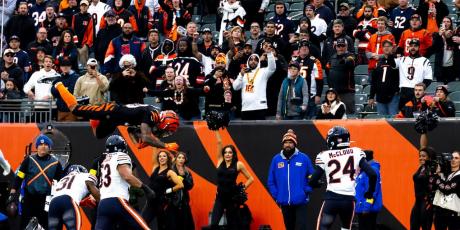Fantasy Football: Auction Strategy 101

John Paulsen, Contributing Editor

Snake drafts are simple, easy to understand and organized.
Auctions are not.
They are haphazard and chaotic, and that’s part of what makes them so much fun.
Want Arian Foster? He’s yours...if you’re willing to pay. You’re not beholden to a certain draft slot or to the whim of the guy picking in front of you. It’s your team and the decisions you make will completely shape your roster, for good or for bad.
Auctions come in all shapes and sizes, but for the past three seasons I’ve played in a league where each team has a $400 salary cap and a roster of 20 players. It’s a slow online auction. Every day, each owner is responsible for nominating one player along with an opening bid, which can’t be seen by the other owners in the league. Bidding is open for 24 hours, unless the high bidder changes, in which case the clock is reset. At any particular time there might be 20 or 30 players up for bidding, but the slow format gives owners plenty of time to consider their options.
I generally budget 90% of my total cap for my starters. This way, I have already accounted for some extra funds to acquire some cheap backups in the later part of the auction. This might seem like a lot to spend on your starters, but these are the guys that are playing week in and week out, so it’s smart to put the vast majority of your resources to that end. Also remember that there will be some starter- and bench-caliber players available on the waiver wire throughout the season.
In most auctions, owners are amped up and ready to spend. Usually, big-name players are nominated first, so there is a sense of urgency when there are 12 or 15 of the game’s top 20 or 30 players on the board. Live auctions are even more intense. The bids come fast and furious and prices are usually inflated. How do you know if they’re inflated? 4for4's recently revamped Full Impact Custom Auction Cheatsheets can tell you. The prices give you a maximum suggested bid for all relevant players based on your custom league scoring format, number of teams and number of starters by position. Your goal is to try to get players you like for that price or less.
When approaching an auction there are three prevailing strategies to consider when bidding on players:
SMASH AND DASH
The “smash and dash” approach is to hit the auction hard at the start, acquiring 2-4 top players – 1st or 2nd rounders in a traditional draft format – spending anywhere from 50-80% of your total budget. While you need to trust your prices, don’t be afraid to pay a bit more than MSRP to get a guy you want.
Tip: If prices are wildly out of whack, then it's smart to rein it in and wait for the value to emerge, because it eventually will.
Once you have your first few players, look to round out your roster with cheaper players, hoping that your studs will stay healthy and carry you to the playoffs. Depending on how far you pushed your payroll, this may be easier said than done. Owners who saved their money for the middle of the auction are going to be able to outbid you at will, so you have to hope that those owners aren’t interested in the cheaper players that you want. If you’re patient, you can usually find good deals in the later stages of the draft.
This is a high risk, high reward strategy. But if you focus on getting your studs for 70%-85% of their true value, you'll be in good shape.
SIT AND WAIT
Another approach is to sit on the sidelines while the other owners trip over themselves overbidding on every player on the board. At some point, they’ll all run out of money having overspent on their studs and won’t have any money left to fill out the rest of their roster with anything but scrubs.
This is the point in the auction – usually when 60%-70% of the total league payroll has been allocated – that the proverbial worm turns. This is when you step in with your wad of cash and pounce on value when it reveals itself. It’s not uncommon for good players (3rd-5th rounders) to go for 50% or less of their true value. The strategy here is to build a balanced squad made up of solid mid-round talent. This type of team will be better able to absorb an injury or two.
There are two drawbacks to this strategy: 1) fantasy champions usually have at least one or two studs on the roster and 2) it can be difficult to sit idly by at the start of the auction as a series of very talented players come and go.
Both strategies, if followed to the letter, have significant drawbacks. This is why I advocate something of a hybrid approach, which I dubbed...
THE HYBRID APPROACH
Clever, I know. This strategy requires the owner to play a little defense in addition to offense. The first thing I do is nominate a player that I don’t really want. Look for players going in the 1st or 2nd round of mock drafts whom you would pass on at their current average draft positions. For example, Maurice Jones-Drew is going at 1.10 this summer and you think that's too high. So throw his name out there and hopefully cause a feeding frenzy, eating up some of the resources of the other owners in the league. This will also eat up a starting roster spot and decrease demand for comparable RBs that are nominated later. I’ll usually cap my bid at 50-60% of the player’s value, so that no one gets a screaming deal (i.e. I would take MJD if it’s at a 50% discount).
Then, as the big-name players are nominated, I’ll bid them up to different levels depending on how strongly I feel about them...60-70% if I’m lukewarm...70-80% if I like them...80-85% if I really like them...90-100% if I love them.
Sometimes, I’ll end up with the high bid on 2-3 big name players early on. Don’t be afraid to spend a good chunk of your payroll on discounted studs. If you can get three first round or early second round players for 60%-75% of your total payroll, you are in good shape. Or two studs at 45%-50% of your payroll is also a good start. Then just lay low for a while. Only enter the fray if there is a value player available that fits your budget.
If you don’t end up with any studs in the first third of the draft, don’t fret, there are bound to be several first and second round talents still available, along with plenty of players who are going in the middle rounds of snake drafts. Keep track of who has and who hasn’t been nominated and only bid with a sense of urgency if the last stud RB or WR becomes available. Chances are, you’ll be able to get him at a price that wasn’t available earlier in the auction.
Slow Auction Tip: If you are high bidder on a player and his auction is almost complete, wait until that auction is done before placing another bid. That way, you'll avoid freeing up money for another owner to bid up your player.
Tip for Kickers: Let someone else overpay for a kicker. Your goal should be to get a good kicker with a minimum bid. One trick is to nominate a kicker in the #5-#10 range your minimum bid early in the draft. You'll often win the auction as other fantasy owners are focused on other positions.
Tip for Defenses: Expect to pay 1%-1.5% of your bankroll on an elite DT. If you are comfortable with using the waiver wire to change your defenses week to week, look for a mediocre defense with good matchups early in the season and spend no more than $1.
SUMMARY
As you can see, auction strategy is something of a nebulous topic. It depends largely on what kind of auction you’re in. If you’re surrounded by aggressive spenders, then it pays to bide your time. If you’re surrounded by bargain hunters, then it is wise to land a few studs early. Flexibility is key.
You should know what kind of auction you’re in by the time the first few players fall off the board. Keep a running total of what players are going for and divide that by their total value. If the number is greater than 1.1, you're in an aggressive league (or at least there are a few aggressive owners). If it's less than 0.9, you're probably in a passive league, so look for some discounted studs early on. Just pay attention, spend wisely, and pounce when the time is right. This might be at the start, in the middle, or at the end. It all depends.












